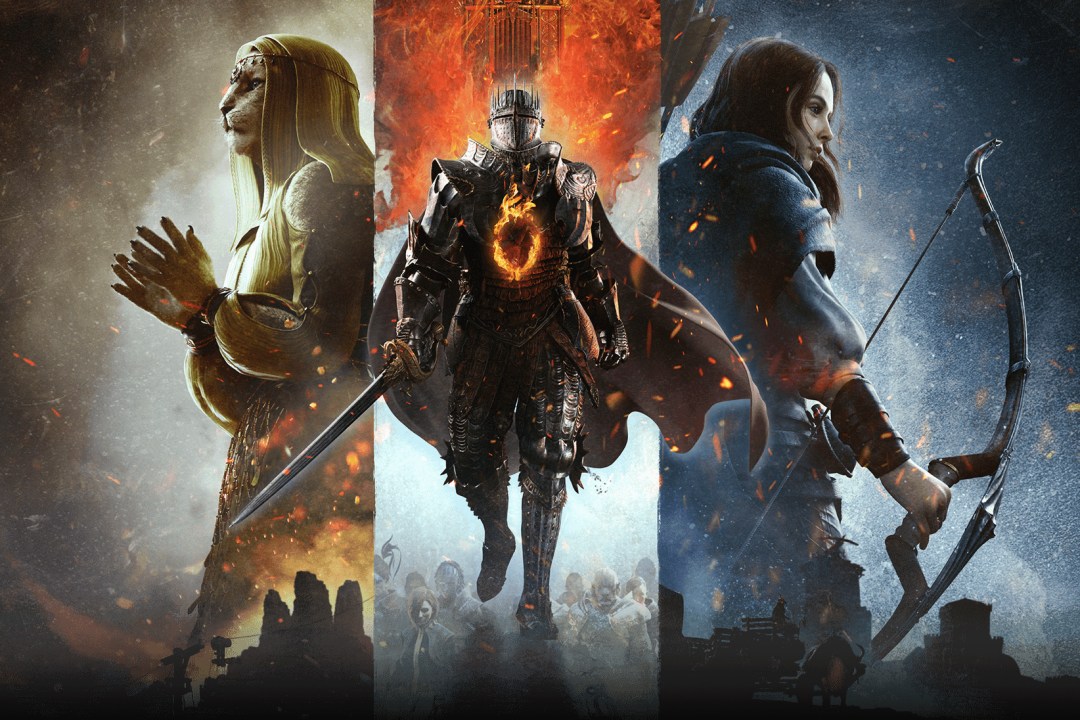Dragon’s Dogma 2 review: cult of personality
Capcom’s ambitious open world fantasy action RPG is unlike anything else

Stuff Verdict
If you can get over some glaring issues, the surprising depth and systems make Dragon’s Dogma 2 an action RPG like nothing else you’ve played.
Pros
- Fun and varied vocations to master
- Pawns make odd but compelling companions
- Thrilling battles with mythical monsters
Cons
- A lot of backtracking
- Erratic performance
There’s no denying Dragon’s Dogma 2 is an exceptionally weird game. Sure, it’s got the familiar medieval fantasy hallmarks: knights and dragons, elves and mages. but under the hood there’s so much more going on, and much of it runs counter to popular game design trends.
Perhaps that’s why its predecessor, originally released in the PS3/360 era, didn’t capture as much attention as Skyrim or Dark Souls – even though it accrued a cult following in the decade since.
After delivering hit after hit with tried and true franchises like Resident Evil and Street Fighter, it’s great to see Capcom preparing to give this underdog another try, for a crowd that’s perhaps open to something weirder. You can almost think of this as the action-oriented equivalent to Baldur’s Gate 3, with just more peculiar team mates.
Pawn stars


The sequel follows the same premise as the original Dragon’s Dogma: a huge, powerful dragon threatens the world, but has also created its own arch rival – the Arisen – by plucking out their heart. In the kingdom of Vermund, that makes you king – except someone else is already on the throne, claiming they had their heart stolen. It’s down to you to solve the imposter problem. Then the bigger, fire-breathing one.
Aside from missing a heart, the Arisen can also command pawns; beings that exist between realms with the sole purpose of serving you. At the outset you create one who stays with you throughout the story, and can enter the rift between worlds to recruit up to two others made by fellow players.
I’ve recruited some hilarious creations, including some lifted from other games, like a knock-off Kratos and Sephiroth voiced like Shakespearean actors. They’re a bizarre, hammy and entertaining bunch, who often parrot the same lines, but get around the “game characters don’t speak naturally” trope because, well, they aren’t quite people.
Pawns prove very capable allies, with some able to act as guides for certain quests. There’s a real organic quality to them, even if you’ll drop them like a hat since they don’t level up (only your own pawn does). But it’s always nice to see them hours later in the rift, having levelled up with their own Arisen, and deciding to add them to your party again.
What’s your vocation?


You won’t just be letting pawns do the fighting; the real fun is getting in on the action yourself. While you have to contend with a lot of run-of-the-mill goblins and harpies, it’s always an event when you get attacked by larger mythical monsters, including ogres and three-headed chimera. You’ll have to go out of your way to find others, such as the mysterious sphinx, which requires more cunning to overcome.
Combat is both meaty and deep – no surprise, given this game comes from the studio behind Monster Hunter and Devil May Cry. But it’s also approachable, without the overwhelming number of weapons from the former or intricate combos from the latter. Grabbing some enemies can lead to Shadow of the Colossus-style scaling to reach their weak points; climbing onto a griffin’s back might mean they’ll fly you somewhere else entirely.
Each of the different vocations feel very different from the other. There’s your standard sword and shield fighter, but I had most fun with the quick-footed thief who can still get in for some brutal takedowns. It’s always handy having a pawn with the mage vocation, so they can heal you or enhance your weapon with elemental magic. You’re encouraged to switch vocations as well, to learn different perks that can apply across vocations.
Some of the best vocations are also exclusive to the Arisen, though the game keeps schtum on how to unlock them. The magick spearhead is probably my favourite, with bad-ass attack animations and magic that stuns enemies. You can even warp to distant enemies and lay down the hurt. The trickster is, as the name implies, tricky to play, because the class doesn’t deal direct damage – but it can be fun to confuse foes into attacking one another, or even making them run off cliffs to their death.
For the journey


As cool as vocations are, changing them up requires visiting a vocation guild in town. It’s annoying that you rank up while out and about, but can’t access the new skills until you visit a guild. It’s a chore, because of the deliberate choice to restrict your exploration options. This open world is more a network of paths hemmed in by cliffs and caverns, and you can’t climb everything or glide around. You also can’t swim in the water, lest you get pulled into the ether by some bizarre entity.
There are still secrets to discover, such as a secluded village of elves whose language you won’t understand without jumping through a few hoops first. But when you do know where to go, it irks having to choose between trekking for 15-30 minutes and fighting the same enemies en route, or spending a significant chunk of in-game currency on fast-travel.
There are oxtail carts you can pay to ride on between a few fixed destinations, but if you get ambushed on the road and the cart winds up getting destroyed in the ruckus? Well, them’s the breaks.
Drake’s misfortune


Dragon’s Dogma 2 is arguably Capcom’s most ambitious use of its proprietary RE engine to date: a large, open-world game exclusive to current-gen consoles. On PS5, the framerate is only smooth during cutscenes, and hovers around 30fps in gameplay. Busy fights can almost turn the action into a slideshow.
The finnicky controls don’t help. There’s no enemy lock-on, and the camera doesn’t know where to point when in tighter spaces. Your pawns can also behave erratically. Some of this may be intentional; there are rumours of a disease going around that can infect pawns and make them stop obeying the Arisen. But I doubt that’s the same as them just running back and forth on the same piece of scenery.
These niggling issues weigh down the overall experience, but you could argue it’s a small price to pay for what’s on offer here: the epic monster fights make you feel like an absolute boss once they’re felled, nighttime skirmishes that are genuinely terrifying if you’re unprepared without a lantern, and plenty of mysteries that you’ll have to think outside of the box to figure out. When it works, it’s quite unlike any other RPG around.
Dragon’s Dogma 2 Verdict


As a cult classic given another shot at the big time, Dragon’s Dogma 2 makes big bold swings. Building on the unique and strange systems of its predecessor, there are some fantastic vocations to play around with and a fine bestiary of mythical monsters to test your mettle against. The ever-changing party of strange, cursed, comforting, dutiful, and hilarious pawns then really makes it like you’re playing a single-player game with other people.
Some stubborn design decisions do mean getting to the good stuff can feel like hard work, and performance is all over the place. But if you can forgive these flaws, this is a very special game that’ll have some unbelievable moments you’ll remember long after your journey comes to an end and the cycle begins anew – or does it?
Stuff Says…
If you can get over some glaring issues, the surprising depth and systems make this an action RPG like nothing else you’ve played.
Pros
Fun and varied vocations to master
Pawns make odd but compelling companions
Thrilling battles with mythical monsters
Cons
A lot of backtracking
Erratic performance



